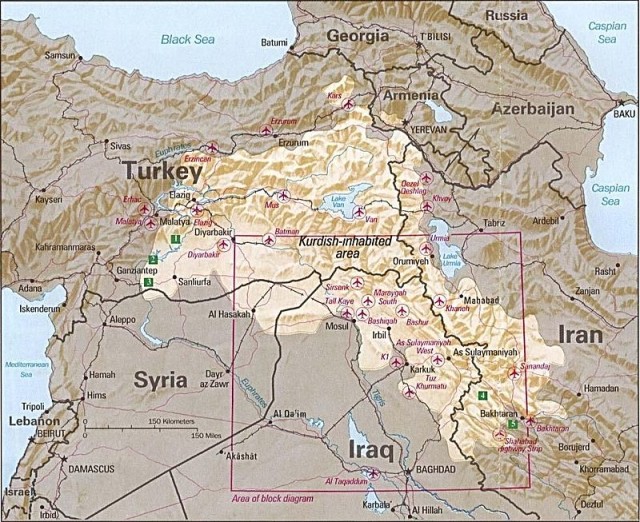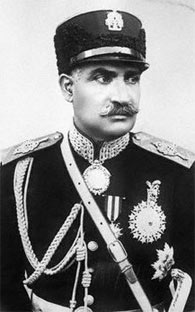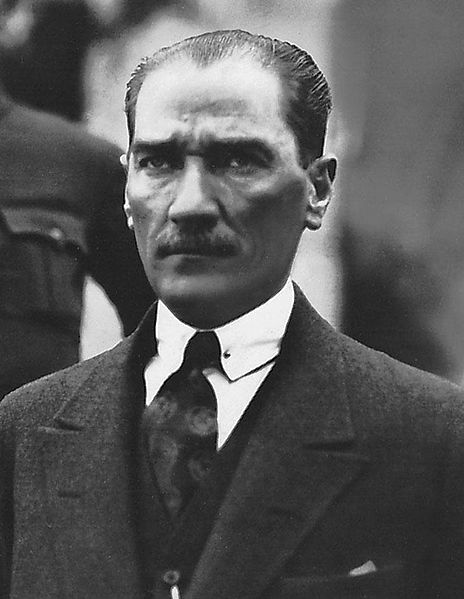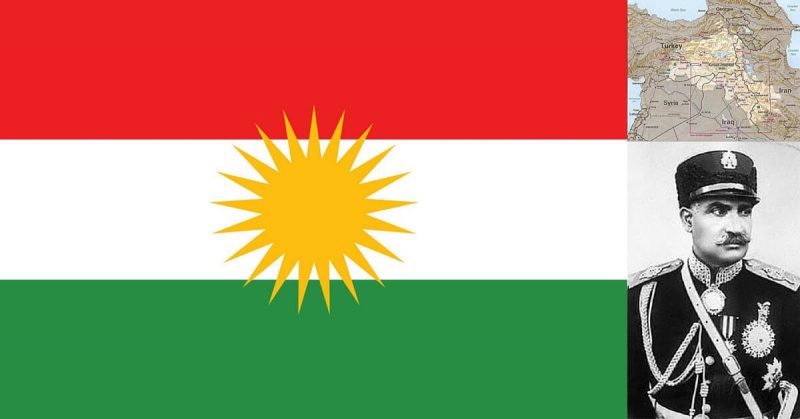Where and What is Kurdistan?
On and around the Zagros and Taurus mountain ranges, the diverse Kurdish people continue to hope and dream of establishing a world-recognized, independent, Kurdistan. The main obstacle on their path to a free Kurdistan is the geography that they call home, and the political entities that dominate the region. The mountains, and the Kurds living near and on them, are split between some of the major powers of the Middle East.
The uprising of the Islamic State in Syria (ISIS or ISIL) has greatly destabilized the regimes that rule the Kurdish populations. With the countries of Syria and Iraq weakened by ISIS, the Kurds may have a chance to begin carving themselves an independent Kurdistan. If the Middle East should see the birth of a new state, Kurdistan would bring great conflict, but would also have a large pool of historical legitimacy.
The main problem for Kurdish independence today is that they inhabit lands of some of the most important, and strongest, authoritarian regimes in the Middle East. According to Carl Dahlman’s, The Political Geography of Kurdistan, Kurdistan spreads across two hundred thousand square miles. It includes the eastern Taurus and northern Zagros Mountains, the upper Transtigridian plains (in Iraq), and the northeastern Jazira (in Syria). Kurdistan reaches into Turkey, Syria, Iraq, Iran, Armenia and Azerbaijan. Historical figures such as Xenophon, Strabo and Pliny recorded evidence of a culture with a Kurdish appearance in the approximate region of Kurdistan from as early as the fifth century BCE.[i]
Based on data from 1996 through 2000, Dahlman calculated that there are around 13 million Kurds in Turkey (20% of the Turkish Population), 4.2 million in Iraq (19% of the population), 5.7 million in Iran (9% of the population), and 1.1 million in Syria (8% of the population).[ii] The Kurds are strong minorities in each of the regions they inhabit. All of the Kurd minorities divided between Turkey, Iraq, Syria, Iran and the other states total to around twenty-five million Kurds. This inspired reporter and author Quil Lawrence to state, “The Kurds are the largest ethnic group on earth that has no homeland.”[iii]

Why is There No Kurdistan?
Europe and the United States heavily influenced the modern political borders of the Middle East. The Ottoman Empire collapsed into Turkey after the First World War, leaving much of the Middle East to be carved up by the imperialist west. Only Turkey, Egypt and Iran (Persia) had legitimate borders before the Ottoman Empire collapsed. The modern countries of Israel, Syria, Jordan, Iraq and Lebanon were all put together by, or with the help of, western powers after WWI. The creation of a Kurdistan was temporarily considered by the western powers but was eventually abandoned, though the Kurds had deep historical evidence to legitimize a Kurdish state.
An Ancient and Unique Kurdish Identity
The Kurds are a distinct people compared to the Turks, Arabs, and Persians that surround them. In appearance, “Kurds are physically fairer than Arabs, and many have angular features and some have blue eyes,” but it is often difficult to tell them apart from other Middle Easterners.[iv] There is a unique Kurdish language and most Kurds follow a type of Sunni Islam that is different from the Sunni beliefs of their Arab and Turkish neighbors. According to Dahlman, the Kurdish language is called Kurmanji and resembles Persian more than it does Turkish or Arabic. Kurmanji has different dialects depending on the Kurdish regions, such as the Bahdinani dialect in northern Kurdistan and Sorani in the South; the division occurs along an imaginary line running from Mosul, Iraq, to Lake Urumiya, Iran.
Most Kurdish Muslims follow the Shaf’i school of Islam while Turkey and the Sunni Arabs mostly follow the Hanafi school. [v] The article “Friends Like These?” from the journal, Kurdish Life, demonstrates the distrust that Kurdish Muslims have against their Arab brothers of faith. A reporter asked a Kurdish interrogator about his Muslim faith, and got the response, “The Koran wasn’t written by God, you know, it was written by Arabs. The Arabs were imperialists, and they forced it on us.”[vi] Sunni Kurd Muslims in Arab countries often do not trust Arab Muslims, and Sunni Kurds in Iran feel threatened by the Shi’ite authoritarian theocracy. The Kurds have a different language and religion from the political authorities that control their land.
The Kurds have lived in their region of Kurdistan for a very long time. Some believe the Kurds to be descendants of the Medes, who were prominent in the sixth century BCE. Historian E. B. Soane, who wrote about the history of the Kurds just before WWI, tried to trace Kurdish ancestry back to “1200 to 1500 years B.C. for it is there we are to see the kings of Nairi, who appear to be the forebears of those Medes who later gained renown, and again later, under the name Kurd, remained a word of terror in the ears of the neighbors.”[vii] Soane continues that the Kurdish lands have been invaded by many historical powers stating, “Assyrian, Parthian, Greek, Roman, Persian, the Arabs under Muhammad, and the Mongols” all sent armies against the Kurds.[viii] One of the greatest Muslim leaders in history, Saladin, who constructed the Ayubbid Caliphate in 1171 to rule from Egypt to Iraq and Syria and fought off Crusaders such as Richard ‘the Lionheart’, was also of Kurdish ethnicity.[ix] When the Ottoman and Persian empires began expanding into Kurdish lands, the Kurds remained relatively autonomous.
Speaking of the Kurds under Persian rule, Soane wrote in 1912, “the only proof of allegiance they were called upon to supply was men for war, which they did.”[x] Carl Dahlman writes of the Kurds living under the Ottoman Empire, “the Ottoman system in Kurdistan tended to institutionalize Kurdish tribal authority rather than reduce it.”[xi] Kurdish history also gains the prestige from the city of Erbil, a World Heritage Site (for its citadel). The Journal, Kurdish Life, writes that for hundreds of years “the Kurds, who drove out many peoples, have occupied the city which is still most important of the provinces.”[xii] The Ottoman and Persian empires were weakened after WWI, but with the communist threat of Russia rising, and the westernizers, like Ataturk and Reza Shah, gaining power in Turkey and Iran, the western powers decided to abandon the idea of an independent Kurdistan.

Abandoning Kurdistan
Before WWI, the Kurds had reached out to the west for support for Kurdish independence. In 1880, a Kurdish leader named Shaykh Ubaydallah, wrote to a British Vice-Consul, stating, “the Kurdish nation is a people apart…we want our affairs to be in our hands.”[xiii]
With letters arriving from Kurdish leaders, such as Ubaydallah’s, along with histories recorded by scholars like Soane, the west knew that the Kurds were a historical people who wished for independence. When WWI was ending, the westerners attempted to bring Kurdistan to life. In 1920, the Ottoman Empire signed the Treaty of Sévres, which called for the formation of Armenian and Kurdish states. The Treaty of Sévres, however, was void when Mustafa Kemal, or Atatürk, pushed the Europeans out of Turkey and beat back the Armenians and Kurds. Kemal’s push forward culminated in the Treaty of Lausanne in 1923, which began the Republic of Turkey, but also left many Kurds under Atatürk’s rule.[xiv]
The Kurds of Mesopotamia were absorbed into Iraq for strategic reasons set up by the British. David Fromkin, author of A Peace to End All Peace, writes, “Mosul’s strategic importance made it seem a necessary addition to Iraq, and the strong probability that it contained valuable oilfields made it a desirable one, but it was part of what was to have been Kurdistan.”[xv] With the Kurds of Turkey and Iraq denied a homeland in these countries, the potential land for Kurdistan shrank dramatically.
Kurds in Persia had little hope of becoming part of Kurdistan, as Persia was not involved in WWI, but when the westernizer, Reza Shah, came to power, western support for the Kurds of Persia dwindled even more. The westerners were willing to work with Mustafa Kemal of Turkey and Reza Shah in Iran because the two tried to westernize their subjects, even if force was required. Dahlman writes of the Shah, “Much like Kemalist Turkey, the Shah’s Iran strove for a secular, Westernized society, promoting industrialization and economic self-assurance.”[xvi] Reza Shah’s western qualities outweighed his authoritarian abuses in the eyes of the western world, so they overlooked the harsh treatment and oppression that he placed on his opponents, such as the Iranian Kurds.
With Turkey, Iraq, and Persia holding on to Kurdish lands, “Independence or autonomy of the Kurds, which had been on the agenda in 1921, somehow disappeared from the agenda in 1922, so there was to be no Kurdistan.”[xvii] The western powers were also very interested in keeping Turkey, Iran and Iraq stable to be a wall against the Russians.
British Lord Curzon stated, “The integrity of Persia…must be registered as a cardinal precept of out Imperial creed”[xviii] The west wanted Turkey, Iraq and Iran to be stable in order to halt Russia, and carving a Kurdistan out of all three of the states would destabilize the regions, especially if Turkey, Iran and Iraq joined forces to attack a free Kurdistan. The Kurds lost land to Mustafa Kemal and Reza Shah, and their land in Iraq went to the British, while their land in Syria went to the French.

Oppression and Resistance
The Kurds wanted independence, and they were not willing to accept oppression without a struggle. As early as 1918, a Kurdish Sheikh named Mahmoud Barzinji was made governor of the Kurdish portion of Iraq, but instead of being just a governor, Sheikh Mahmoud declared himself king of the Kurds. The British deposed him, yet gave him a second chance as governor in 1922. Once again, Mahmoud proclaimed himself king and was deposed.[xix]
In 1925, Kurds in Turkey rebelled under Shaykh Saïd, but the rebellion only lasted a few months before the Turkish army restored order.[xx] During the 1930s, the Kurds rebelled under the leadership of Sheikh Ahmad of Barzan. Ahmad’s brother, Mulla Mustafa Barzani led another rebellion in 1943, but he had to flee to Russia in 1945, earning him the name ‘Red’ Mulla. The Russians had voiced support for Kurdistan, likely making the other Allied powers even more supportive of Turkey and Iran, which bordered Russia and housed many Kurds.[xxi] A Kurd nationalist operating in Iran in 1946, named Qazi Mohammed, created the Kurdish Republic of Mahabad in Iranian region of Kurdistan, which lasted only around a year before Mohammed other Kurdish leaders were executed by Iranian forces.[xxii]
Mustafa Barzani raised a Kurdish rebellion in Iraq once again in 1961 and by 1963 the Iraqi Prime Minister, Qassim, was overthrown.[xxiii] The Kurds and the Ba’th Party in Iraq, commanded by Saddam Hussein, clashed from 1974 to 1975 over Kurdish autonomy (originally granted in 1970, but amended in 1974 by Hussein to limit Kurdistan’s territory) and ended with Barzani exiled and many Kurds fleeing as refugees.[xxiv] The Iraqi-Kurd violence climaxed with the 1988 Anfal Campaign, which killed anywhere from 50,000 to 200,000 Kurds and led to the west issuing a no-fly zone over Kurdish Iraq.[xxv]
Now, because of the USA-imposed no-fly zone and the defeat of Saddam Hussein, Kurds in Iraq have gained a great deal of autonomy and power. Quil Lawrence writes, “the destruction of Saddam Hussein’s regime and the collapse that followed left Kurdistan as the only fully functioning part of Iraq,” and “With each disaster that befell Iraq, the Kurds took a step further.”[xxvi] The Kurds are an active people, keeping up resistance, striving to gain more autonomy, and are not willing to submit willingly.
The Kurds’ violent tendencies do not help them escape oppression. In Turkey, their movements and rebellions are quickly put down. The Kurds in Iran were oppressed by the Shah and remain oppressed by the theocratic government. Iraq launched the Anfal campaigns and caused a sea of Kurdish refugees. Syrian Kurds are also oppressed. The article, “Friends Like These?” states, “paranoia in Damascus can only conclude that the Syrian Kurds identify with the Iraqi Kurds who are allied with the United States” and because of that Assad and his regime had an excuse to “deprive Kurds of their language and culture and, eventually of their ancestral lands.”[xxvii] Adding to the problems, the states of Turkey, Iran, Iraq and Syria support each other’s oppression of the Kurds because they fear the “creation of a greater Kurdistan.”[xxviii] As the Iraqi Kurds gain power, the regimes in Turkey, Iran, and Syria worry that their own Kurds will be inspired or emboldened to seek their own autonomy.
The Kurds have thousands of years of history tying them to the region of Kurdistan. For much of their existence, they have lived under their own leadership, like the Medes and Saladin. The Kurds, when conquered, have often been given high levels of autonomy. This happened in the Ottoman Empire and Persia, and the trend continues in Iraq, today. The western ideas of nationalism and self-determination have led to a longing for an independent Kurdistan among many Kurds.
Unfortunately, the geographic location of the Kurdish lands, and the powerful countries that surrounded them, left them without their own national homeland after WWI. Turkey, under Mustafa Kemal, overruled the Ottoman Empire’s deal to create Kurdistan. Kemal was western enough for the United States and Europe to side with Kemal and Turkey over the Kurds. Kurds in Persia, which became Iran under Reza Shah, had even less hope of western support because Persia was not a part of the Ottoman Empire and did not participate in the war. The western powers decided to support the secular and modernizing Turkish and Iranian authoritarians, rather than destabilize the region by creating Kurdistan.
Containing Russia was of the highest priority to the western powers, so they decided that forming Kurdistan would be detrimental to their interests in the region. Angering and weakening Kemal and Reza Shah could have made them switch allegiance to the Russians, rather than siding with the other Westerners. Now, the Kurds remain a threatening minority in many of the important Middle Eastern nations. Turkey, Syria, Iraq and Iran suppress what they can of Kurdish nationalism.
With the rise of ISIS and the destabilization of Iraq and Syria, the Kurds have been able to increase their autonomy and expand their territory. Perhaps, if they continue to contribute to the fight against ISIS, they could call for acceptance of an independent Kurdistan, but the same issue from WWI, stability, may halt their ambitions. If Kurds in Iraq gained independence, they would likely be targeted by Turkey, Syria, Iran and what remains of Iraq causing instability that the west may want to avoid.
If the Kurds were in a less tense land, and under less important regimes, it would be likely that an independent Kurdistan would exist for them to call home.
By C. Keith Hansley
Notes
___________________________________
[i] Dahlman, Carl. “The Political Geography of Kurdistan,” Eurasian Geography and Economics 43:4 (2002), pp.271.
[ii] Dahlman. “The Political Economy of Kurdistan.” Pp. 274.
[iii] Lawrence, Quil. Invisible Nation: How the Kurds’ Quest For Statehood is Shaping Iraq and the Middle East. New York: Walker Publishing Company, 2008. Pp. 3.
[iv] Lawrence. Invisible Nation. Pp.11.
[v] Dahlman. “The Political Economy of Kurdistan.” Pp. 275.
[vi] “Friends Like These?,” edited by Vera Beaudin Saeedpour, Kurdish Life 65 (2008), pp.19.
[vii] Soane, E. B. To Mesopotamia and Kurdistan in Disguise: With Historical Notices of Kurdish Tribes and the Chaldeans of Kurdistan. in International Journal of Kurdish Studies 22 (2008), pp. 60
[viii] Soane. To Mesopotamia and Kurdistan in Disguise. Pp. 62.
[ix] Lawrence. Invisible Nation. Pp. 9.
[x] Soane. To Mesopotamia and Kurdistan in Disguise. Pp. 65.
[xi] Dahlman. “The Political Economy of Kurdistan.” Pp. 277.
[xii] “The Way it Was,” edited by Vera Beaudin Saeedpour, Kurdish Life 66 (2008), pp. 24.
[xiii] Dahlman. “The Political Economy of Kurdistan.” Pp. 278.
[xiv] Lawrence. Invisible Nation. Pp. 13.
[xv] Fromkin, David. A Peace to End All Peace: The Fall of the Ottoman Empire and the Creation of the Modern Middle East. New York: Henry Holt and Company, 1989. Pg. 450.
[xvi] Dahlman. “The Political Economy of Kurdistan.” Pp. 283.
[xvii] Fromkin. A Peace to End All Peace. Pp. 560.
[xviii] Fromkin. A Peace to End All Peace. Pp. 456.
[xix] Lawrence. Invisible Nation. Pp. 14.
[xx] Dahlman. “The Political Economy of Kurdistan.” Pp 279.
[xxi] Lawrence. Invisible Nation. Pp. 16-17.
[xxii] Dahlman. “The Political Economy of Kurdistan.” Pp. 284.
[xxiii] Lawrence. Invisible Nation. Pp 19.
[xxiv] Dahlman. “The Political Economy of Kurdistan.” Pp. 287.
[xxv] Dahlman. “The Political Economy of Kurdistan.” Pp. 289.
[xxvi] Lawrence. Invisible Nation. Pp. 4-5.
[xxvii] “Friends Like These?,” edited by Vera Beaudin Saeedpour, Kurdish Life 65 (2008), pp.19.
[xxviii][xxviii] Bonine, Michael E. “The Kurds and Kurdistan: A Commentary,” Eurasian Geography and Economics 43:3 (2002), pp. 301.
